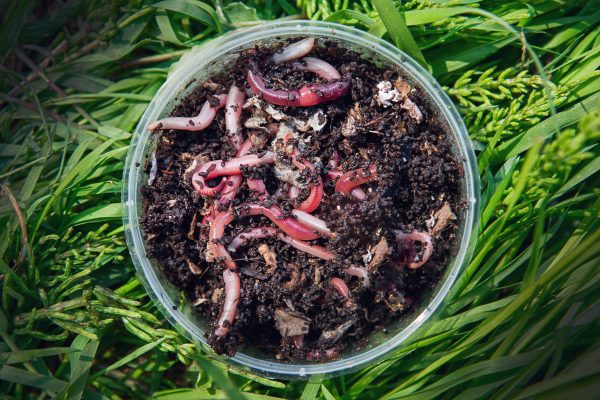Why Red Wiggler Composting is the Best Choice for Eco-Friendly Gardening
Wiki Article
Comprehending the Advantages of Red Wiggler Composting: Just How This Efficient Method Transforms Organic Waste Into Nutrient-Rich Dirt Modifications
Red Wiggler composting, using the types Eisenia fetida, presents an engaging strategy to organic waste administration, transforming cooking area scraps and backyard particles into valuable soil amendments. This method not only improves soil fertility yet likewise addresses pushing environmental issues, including landfill waste reduction and greenhouse gas exhausts. As we check out the complexities of this procedure, the multifaceted advantages it supplies may expose unanticipated insights right into sustainable methods and ecological equilibrium. Recognizing these dimensions might motivate a reevaluation of just how we perceive waste and its prospective payments to a healthier earth.What Are Red Wigglers?
Red wigglers, medically referred to as Eisenia fetida, are a species of earthworm that play a pivotal function in vermicomposting systems. These worms are defined by their reddish-brown shade, segmented bodies, and an unique capacity to prosper in organic-rich settings, making them suitable for composting applications - Red Wiggler Composting. Unlike their garden-dwelling equivalents, red wigglers like to occupy the upper layers of soil, where rotting matter is abundantUsually gauging in between 3 to 4 inches in length, red wigglers have a high reproductive rate, allowing them to multiply rapidly under optimum problems. They possess a distinct gastrointestinal system that allows them to refine natural waste successfully, transforming it into nutrient-rich spreadings, which are very advantageous for plant growth.
Their tolerance to varying wetness degrees and temperature ranges even more boosts their energy in vermicomposting arrangements, making them a preferred choice amongst composting lovers. Furthermore, red wigglers are cardio organisms, which requires a well-aerated composting setting, ensuring efficient disintegration. Recognizing the organic characteristics and behaviors of red wigglers is important for maximizing their usage in lasting waste management methods.

Benefits of Vermicomposting
Utilizing the power of vermicomposting offers a plethora of farming and environmental advantages. To start with, it dramatically lowers organic waste in land fills, therefore decreasing methane discharges, a powerful greenhouse gas. By drawing away food scraps and backyard waste to vermicomposting, we sustain an even more sustainable waste administration system.Furthermore, vermicomposting improves dirt wellness. The castings produced by red wigglers are abundant in essential nutrients, microbes, and enzymes, improving dirt structure and fertility. This nutrient-rich modification promotes durable plant growth and increases water retention, reducing the requirement for chemical fertilizers.
Moreover, vermicomposting fosters biodiversity in the dirt ecological community. The introduction of useful microbes from worm castings aids in condition reductions and nutrient biking, creating a much healthier atmosphere for plants.
Economically, vermicomposting decreases the costs connected with chemical inputs and garbage disposal. Farmers and garden enthusiasts can grow high-quality fruit and vegetables at reduced expenses, adding to food security and sustainability.
Just How to Start Composting
Starting a composting endeavor can be a simple and satisfying procedure. To begin, pick an ideal place that is well-drained and receives partial sunlight. This will assist preserve a well balanced temperature level, essential for the composting procedure. Next off, choose a compost container or develop a designated area in your garden, guaranteeing it is quickly obtainable for adding materials and collecting compost.Collect organic materials such as cooking area scraps, lawn waste, and shredded paper. Objective for a balanced mix of 'environment-friendly' materials, high in nitrogen (e.g., fruit scraps, coffee grounds), and 'brown' materials, rich in carbon (e.g., dried leaves, cardboard) A proportion of approximately 2:1 environment-friendly to brownish materials is excellent.
Beginning layering your materials, guaranteeing appropriate air blood circulation by transforming the stack on a regular basis. This advertises cardiovascular decay, speeding up and minimizing smells up the procedure. Display dampness levels; the compost must seem find out here now like a damp sponge however not extremely wet.
Nutrient Profile of Vermicompost
Composting, particularly with red wigglers, yields a nutrient-rich product known as vermicompost. Furthermore, it offers trace elements like iron, calcium, and magnesium, fostering robust plant development and enhancing soil health and wellness.The microbial activity existing in vermicompost further improves its account, presenting valuable bacteria and fungis that promote nutrient availability and uptake in plants. This organic part aids in reducing plant illness and enhancing soil framework, leading to enhanced water retention and aeration.

Environmental Impact of Composting
The environmental influence of composting, particularly via making use of red wigglers, is extensive and multifaceted. This method substantially minimizes the quantity of organic waste sent to garbage dumps, which subsequently minimizes greenhouse gas exhausts, particularly methane-- a potent factor to climate modification. By drawing away organic materials from land fills, red wiggler composting not just helps minimize ecological destruction yet also advertises sustainable waste management practices.
In addition, composting adds to carbon sequestration, as the process captures carbon dioxide from the atmosphere and stores it in the dirt. This all-natural process help in combating environment modification while enhancing the soil - Red Wiggler Composting. On the whole, red wiggler composting presents a feasible, eco-friendly solution for waste administration and ecological sustainability, promoting much healthier environments and an extra lasting future
Final Thought
In conclusion, Red Wiggler composting offers as an effective technique for transforming natural waste right into valuable dirt modifications. The procedure not just enhances dirt fertility and framework but additionally reduces environmental problems connected with waste disposal.Red Wiggler composting, employing view it the varieties Eisenia fetida, provides a compelling technique to natural waste monitoring, converting cooking area scraps and backyard debris into important soil changes. Unlike their garden-dwelling equivalents, red wigglers prefer to occupy the top layers of soil, where decomposing issue is abundant.
The castings produced by red wigglers are rich in essential nutrients, microorganisms, and enzymes, improving soil framework and fertility. The nutrient-rich results of red wiggler task boost soil structure, increase water retention, and advertise biodiversity within the soil ecosystem.In final thought, Red Wiggler composting offers as an efficient technique for converting organic waste right into beneficial dirt changes.
Report this wiki page